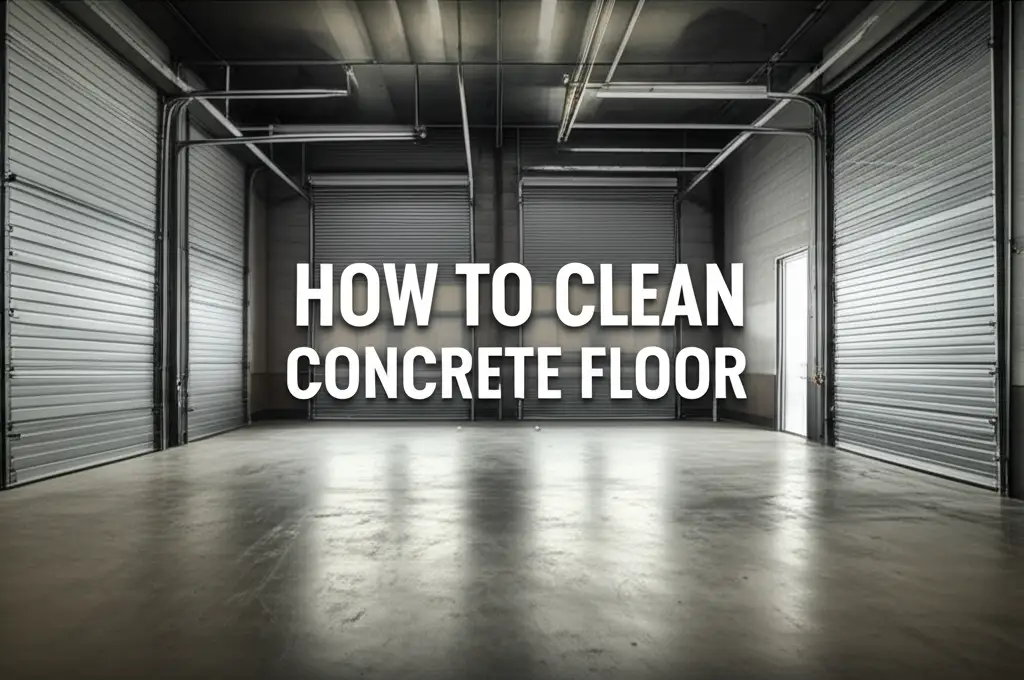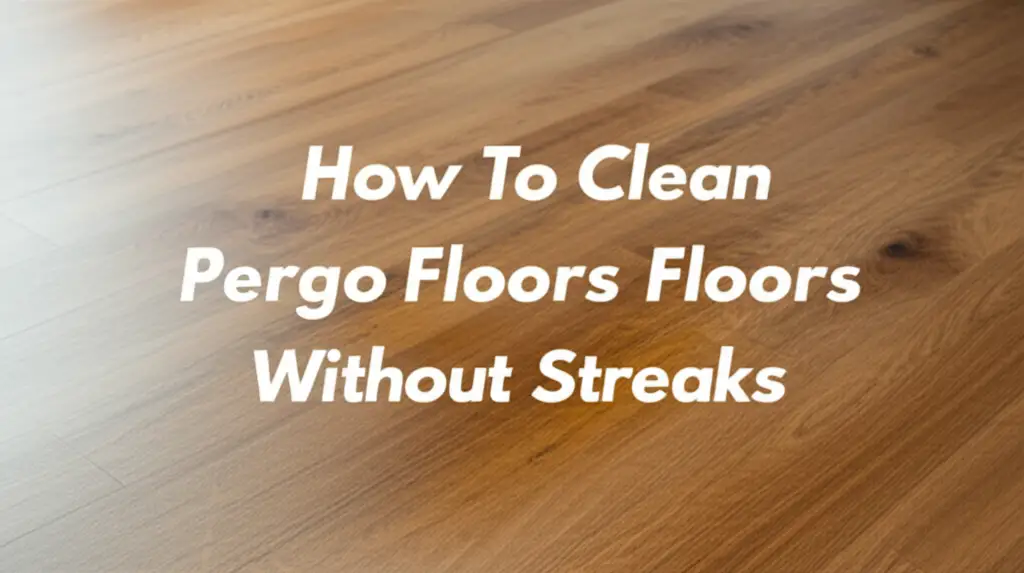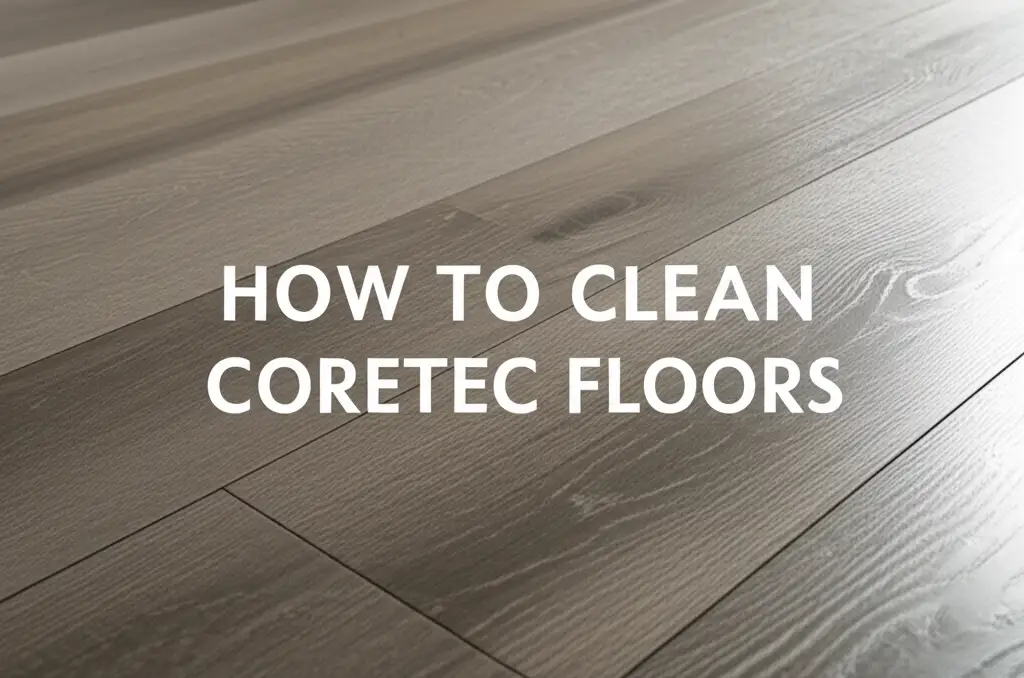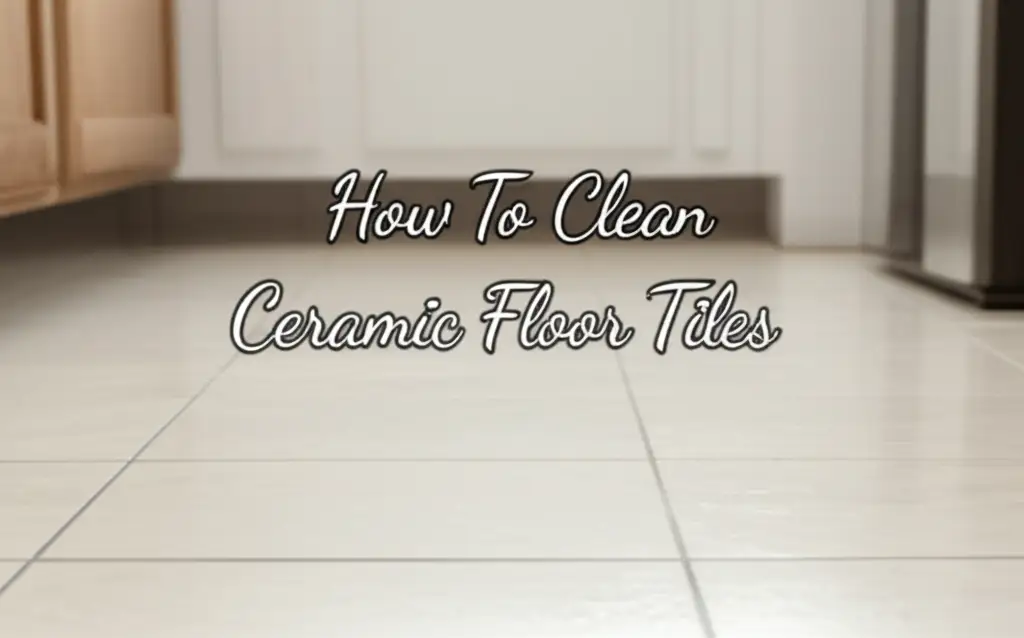· Floor Care · 14 min read
How To Clean Brick Floors
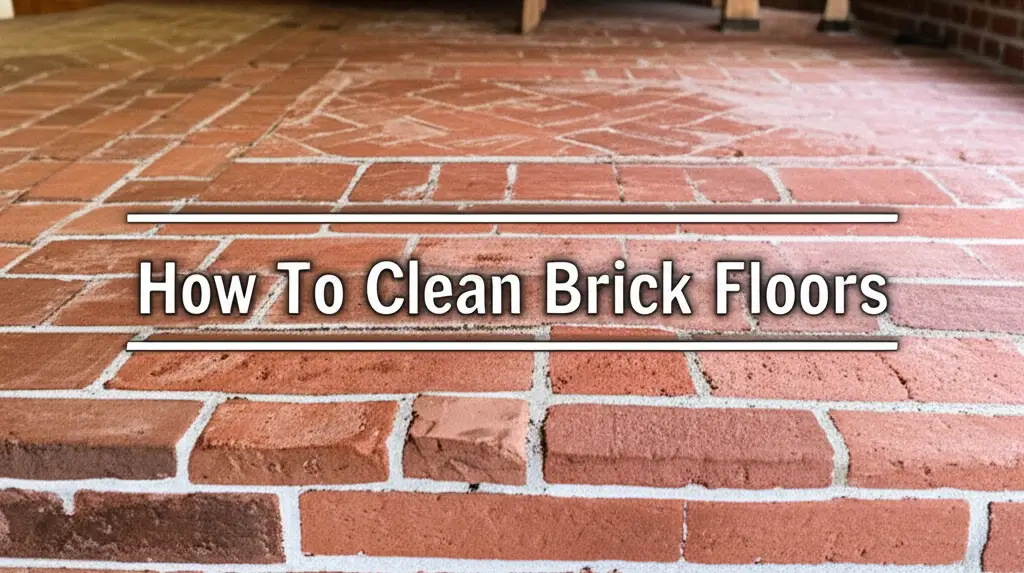
Clean Brick Floors: A Comprehensive Guide
Brick floors offer timeless charm and rugged durability. They add a unique character to any home. However, their porous nature and textured surface make how to clean brick floors a distinct challenge compared to other flooring types. Dust, dirt, and spills settle into the crevices and grout lines, requiring specific cleaning approaches. Proper brick floor care ensures your floors remain beautiful for years. This guide will walk you through everything you need to know, from routine maintenance to tackling stubborn stains and protecting your investment.
Takeaway
- Regular sweeping and vacuuming prevent dirt buildup.
- Gentle cleaning solutions like mild soap and water are best for routine messes.
- Specialized cleaners or natural remedies work for tough stains like mold or efflorescence.
- Sealing your brick floors protects them from future damage and makes cleaning easier.
Clear, Concise Answer
To effectively clean brick floors, start by dry sweeping or vacuuming to remove loose debris. Then, damp mop with a solution of mild soap and warm water. For tougher stains, use specialized brick cleaners or natural solutions like vinegar, ensuring proper ventilation and testing in an inconspicuous area.
Understanding Your Brick Floors: Types and Characteristics
Before you start cleaning brick floors, it is important to know your brick type. Brick floors come in several forms, each with unique characteristics. Common types include reclaimed brick, thin brick veneers, and traditional pavers. Each type has different porosity and finish. This knowledge helps you choose the right cleaning method. Understanding your specific brick floor prevents damage.
Bricks are porous materials. This means they absorb liquids and dirt easily. Their rough texture traps grime. Grout lines between bricks also collect dirt and stains. This porosity makes them susceptible to moisture issues like mold or efflorescence if not cared for correctly. Cleaning indoor brick properly requires understanding these features. A sealed brick floor is less porous than an unsealed one. This affects how dirt penetrates the surface.
Different finishes also impact cleaning. Some brick floors have a glazed or sealed finish. These are more resistant to stains and easier to wipe clean. Unsealed bricks require more caution with liquids and harsh cleaners. Always test any cleaning solution on a small, hidden area first. This step prevents potential discoloration or damage. Know your brick, then clean it.
Essential Tools and Cleaning Solutions for Brick Floors
To effectively clean brick floors, you need the right tools and cleaning solutions. Gathering these items before you start saves time and effort. You will achieve better results with the correct supplies. Proper tools make the cleaning process much easier. They also protect your brick from harm.
For general cleaning, simple tools are usually sufficient. A soft-bristle broom is ideal for sweeping loose dirt. A powerful vacuum cleaner with a hard floor attachment picks up fine dust and debris from grout lines. A mop, either a sponge mop or a string mop, works well for wet cleaning. You also need two buckets: one for cleaning solution and one for rinse water. Old towels or microfiber cloths help with drying.
When it comes to cleaning solutions, start with the mildest option.
- Mild Dish Soap or All-Purpose Cleaner: Mix a small amount with warm water. This solution is perfect for routine cleaning and light dirt.
- White Vinegar: Diluted vinegar is excellent for cutting through grease and mild stains. Mix equal parts white vinegar and water for general use. It also helps with efflorescence.
- Baking Soda: Create a paste with water for abrasive spot cleaning on tough grime.
- Specialized Brick Cleaners: For stubborn stains, commercial brick cleaners are available. Read labels carefully and choose products safe for indoor use. Always follow manufacturer instructions. These cleaners target specific issues like cleaning efflorescence off brick.
Always use protective gear like gloves and safety glasses, especially when handling stronger chemicals. Good ventilation is also important. These precautions keep you safe during the cleaning process.
Routine Cleaning for Maintained Brick Floors
Maintaining the beauty of your brick floors involves regular, routine cleaning. This proactive approach prevents dirt from accumulating and setting into the porous surface. Consistent upkeep also reduces the need for harsh chemicals. It ensures your brick floors always look their best. Simple steps make a big difference.
Begin your routine by dry cleaning. Sweeping with a soft-bristle broom removes loose dirt, dust, and crumbs. For a more thorough job, use a vacuum cleaner with a hard floor attachment. This reaches into the grout lines and the textured surface of the bricks. Vacuuming is crucial for removing abrasive particles that can scratch the floor over time. I usually vacuum my brick floors at least twice a week.
After dry cleaning, proceed to damp mopping. Prepare a solution of warm water and a few drops of mild dish soap or a pH-neutral floor cleaner. Use a mop, preferably one that can be wrung out very well. Excess water can damage brick and grout. Dip the mop into the cleaning solution. Wring it out until it is barely damp. Mop the floor in sections. Rinse the mop frequently in a separate bucket of clean water. This prevents spreading dirt around.
Allow the floor to air dry completely. You can also use a fan to speed up drying time. Avoid walking on the damp floor to prevent footprints. Routine cleaning keeps your brick floors beautiful. It also extends their lifespan.
Deep Cleaning Your Brick Floors for Tough Grime
Sometimes, routine cleaning is not enough. Brick floors can accumulate deep-set grime over time. This happens especially in high-traffic areas or due to neglect. Deep cleaning addresses these stubborn issues. It restores your brick floors to their original luster. This process requires more effort and stronger solutions.
Start by preparing the floor. Sweep or vacuum thoroughly to remove all loose debris. This step prevents turning dirt into muddy streaks during wet cleaning. Gather your stronger cleaning solutions and tools. A stiff-bristle brush, not a wire brush, will be helpful for scrubbing grout lines and tough spots.
For general deep cleaning, a slightly stronger solution than routine cleaning works well. Mix warm water with a commercial brick cleaner designed for deep cleaning. Always follow the product’s instructions for dilution and application. Apply the solution to a small section of the floor. Let it sit for the recommended time to penetrate the grime. Then, scrub the area with your stiff brush. Focus on heavily soiled areas and grout lines.
After scrubbing, rinse the section thoroughly with clean water. You can use a clean mop or wet-dry vacuum to remove the dirty water. Rinse several times to ensure no cleaning solution residue remains. Residue can attract more dirt. If you encounter specific problems like cleaning mortar off brick or other construction debris, specialized removers may be necessary. Always rinse completely and let the floor dry fully before moving on.
Tackling Stubborn Stains: Mold, Soot, and Efflorescence
Brick floors can suffer from specific types of stubborn stains that require targeted treatment. Mold, soot, and efflorescence are common culprits. Each needs a different approach to clean effectively. Addressing these issues promptly prevents further damage. I know how frustrating these stains can be.
Mold and Mildew: Mold thrives in damp, dark environments. Brick floors in basements or areas with high humidity are prone to mold growth. To clean mold off brick floors, create a solution of one part bleach to three parts water. You can also use a commercial mold cleaner. Apply the solution to the affected area with a spray bottle or sponge. Let it sit for 15-20 minutes. Scrub with a stiff brush. Rinse thoroughly with clean water. Ensure good ventilation while working with bleach.
Soot Stains: Brick floors near fireplaces often get soot stains. Soot is oily and very difficult to remove. To clean soot off brick floors, sprinkle baking soda directly onto the stain. Make a paste with a little water. Let the paste sit for a few minutes. Scrub vigorously with a stiff brush. For very stubborn soot, a specialized fireplace cleaner or a solution of trisodium phosphate (TSP) might be needed. TSP is strong, so use it with caution and always wear protective gear. Rinse well after scrubbing.
Efflorescence: Efflorescence appears as a white, powdery substance on brick surfaces. It is caused by salts leaching out of the brick or mortar as water evaporates. To remove efflorescence, start with a stiff brush and no water. Brushing it dry prevents the salts from re-dissolving. For persistent efflorescence, a dilute solution of white vinegar (one part vinegar to four parts water) can help. Apply the vinegar solution. Let it sit for a few minutes. Scrub the area. Rinse thoroughly with clean water. Cleaning efflorescence off brick might require repeat applications. For very severe cases, a very dilute muriatic acid solution can be used, but with extreme caution and professional guidance. Cleaning brick with muriatic acid requires proper safety gear and ventilation.
Always test any stain removal solution on an inconspicuous area first. This step confirms it does not damage or discolor your brick. Proper ventilation is also key when using strong chemicals.
Sealing and Protecting Your Brick Floors
After you clean brick floors, protecting them is the next crucial step. Sealing your brick floors helps prevent future staining and makes routine cleaning much easier. A good sealant forms a protective barrier over the porous brick and grout. This barrier repels water, oil, and dirt. It also enhances the natural color of your brick.
There are different types of sealants available.
- Penetrating Sealers: These soak into the brick and grout, providing protection from within. They do not change the appearance of the brick much. They offer good breathability.
- Topical Sealers (Surface Sealers): These form a protective film on the surface of the brick. They can provide a glossy or satin finish. They offer excellent stain resistance. Some might make the floor slightly slippery.
Before applying any sealer, ensure your brick floor is completely clean and dry. Any moisture or dirt trapped under the sealer will become permanent. Follow the manufacturer’s instructions for application carefully. Most sealers require two thin coats for optimal protection. Apply the sealer using a paint roller, brush, or sprayer. Work in small sections to ensure even coverage. Avoid puddling the sealer.
Allow the first coat to dry according to the product’s instructions before applying the second. After the final coat, allow the sealer to cure completely before resuming normal foot traffic. Curing time varies, typically from 24 to 72 hours. Re-sealing your brick floors every few years is a good practice. The frequency depends on foot traffic and the type of sealant used. This proactive step saves you a lot of cleaning effort in the long run.
Advanced Cleaning Techniques and When to Call a Pro
While most brick floor cleaning tasks are DIY-friendly, some situations might require advanced techniques or professional help. Knowing when to escalate your cleaning efforts protects your investment. It also ensures the best possible outcome for your floors. Some stains prove incredibly stubborn.
For deeply embedded dirt that regular scrubbing cannot remove, a power washer might seem like a good idea. However, I caution against using high-pressure washers on indoor brick floors. The high pressure can damage the brick surface or blast out grout. If you must use one, set it to the lowest pressure and use a fan tip. Test it on a hidden area first. A steam cleaner is a safer alternative for sanitizing and lifting deep dirt. Steam loosens grime effectively without harsh chemicals or excessive water.
Certain stains, like oil, grease, or severe rust, can be exceptionally challenging.
- Oil and Grease Stains: Apply an absorbent material like cat litter, sawdust, or cornstarch directly onto the fresh stain. Let it sit for several hours or overnight to absorb the oil. Sweep it away. For old stains, use a degreaser formulated for masonry.
- Rust Stains: These often require a specialized rust remover for brick. These products contain acids that dissolve rust. Use them with extreme care, following all safety instructions. They can etch brick if left on too long.
If you face widespread severe staining, extensive mold growth, or damage to the brick or grout, calling a professional cleaner is wise. Professionals have specialized equipment and stronger, yet safer, cleaning agents. They also possess the expertise to handle delicate or historic brick without causing harm. They can also advise on proper sealing. Sometimes, the cost of professional cleaning outweighs the risk of damaging your floors yourself. They can also assist with cleaning brick before painting if you plan a renovation.
Preventing Future Stains and Damage
Cleaning your brick floors effectively is just one part of their care. Preventing future stains and damage is equally important. Proactive measures keep your floors looking their best for longer periods. They also reduce the frequency of deep cleaning. A little prevention goes a long way.
One of the most effective preventive measures is placing mats at all entryways. Outdoor mats scrape off dirt and grit from shoes. Indoor mats, particularly those with absorbent fibers, trap moisture and fine particles. This significantly reduces the amount of dirt tracked onto your brick floors. Encourage family members and guests to wipe their feet thoroughly.
Regular sweeping and vacuuming are your first line of defense. As mentioned in the routine cleaning section, consistent dry cleaning prevents dirt from being ground into the brick and grout. Dirt acts as an abrasive, slowly wearing down the brick surface and sealant. Make it a habit to clean frequently.
Address spills immediately. Brick is porous, and liquids can quickly soak in, leading to stains. Blot up spills with a clean cloth or paper towel. Do not wipe, as this spreads the liquid. For sticky or colored spills, follow up with a damp cloth and a small amount of mild soap. Prompt action prevents a minor spill from becoming a permanent stain.
Finally, consider re-sealing your brick floors periodically. A good sealant provides an invisible barrier against moisture and stains. The frequency of re-sealing depends on foot traffic and the type of sealant used. Typically, every 2-5 years is recommended. A well-maintained sealant prevents most staining before it even starts. These simple habits ensure your brick floors remain beautiful and durable.
FAQs About Cleaning Brick Floors
Q1: Can I use a steam mop on my brick floors?
A1: Yes, a steam mop can be a good option for cleaning brick floors. Steam helps loosen dirt and sanitize surfaces without using harsh chemicals. Ensure your brick floors are sealed, as unsealed brick might absorb too much moisture. Test it on a small, hidden area first to check for any adverse effects.
Q2: How do I remove black stains from brick floors?
A2: Black stains on brick floors are often mold, mildew, or soot. For mold, use a solution of bleach and water (1:3 ratio) or a commercial mold cleaner. For soot, sprinkle baking soda and make a paste with water, then scrub. Always rinse thoroughly after treating.
Q3: Is vinegar safe for cleaning brick floors?
A3: Yes, diluted white vinegar is generally safe for cleaning brick floors. It effectively removes dirt, grease, and efflorescence. Mix equal parts white vinegar and water for general cleaning. Avoid using undiluted vinegar too often, especially on unsealed brick, as its acidity can be harsh over time.
Q4: How often should I deep clean my brick floors?
A4: The frequency of deep cleaning depends on foot traffic and how quickly your floors get dirty. For high-traffic areas, deep clean every 3-6 months. For lower-traffic areas, once or twice a year might be sufficient. Regular routine cleaning reduces the need for frequent deep cleaning.
Q5: What is efflorescence and how do I prevent it on my brick floors?
A5: Efflorescence is a white, powdery residue caused by mineral salts migrating to the surface of brick or mortar as water evaporates. To prevent it, ensure proper drainage and ventilation, especially in damp areas. Sealing your brick floors helps reduce water absorption, thereby minimizing efflorescence.
Q6: Can I use a pressure washer on indoor brick floors?
A6: Using a pressure washer on indoor brick floors is not recommended. High pressure can damage brick and grout, potentially causing them to crumble. It can also force water deep into the subfloor. A wet-dry vacuum or a shop vacuum is a safer option for extracting dirty water after cleaning.
Conclusion
Cleaning brick floors might seem like a daunting task at first, but with the right knowledge and tools, it becomes straightforward. You have learned how to clean brick floors effectively, from daily maintenance to tackling the toughest stains. Regular care, appropriate cleaning solutions, and preventative measures ensure your floors remain beautiful and durable. Remember to always assess your specific brick type, test cleaners in a small area, and consider professional help for severe issues. By following these steps, your brick floors will continue to add warmth and character to your home for many years. Start your brick floor cleaning journey today!
- brick floor cleaning
- floor maintenance
- stain removal
- grout cleaning
- DIY cleaning

